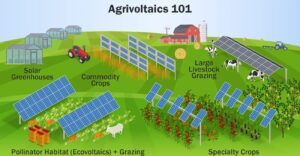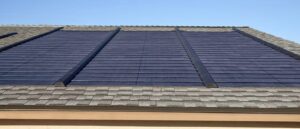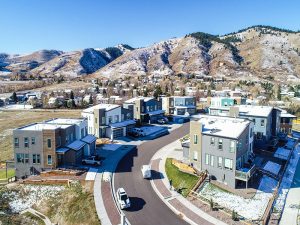Let me first say that while I studied thermodynamics and heat transfer in school, it’s been many years since I’ve had to look up a specific heat capacity coefficient. With that said, there are some fundamental things that have stuck and I can’t help but apply those concepts into my design work and try to help others understand the nature of nature (or in this case, the nature of buildings).
So first, you need to familiarize yourself with some basics about the way that heat energy moves around. There are really only three ways this can happen:
1) Conduction – this is direct heat transfer through a material. Some materials are better conductors than others. This is why pots and pans are metal and scuba suits are synthetic rubber.
2) Convection – this is literally where a material that has heat in it physically moves to another location. This seems rather low tech, but it is quite effective. Consider where hot air goes and how nice it is to have a summer breeze.
3) Radiation – Without this one, we would be a cold, dead world. The Sun transmits all of it’s energy through the solar system via this method and it is a very important mode of heat transfer.

This discussion is going to focus specifically on Conduction. I’ll leave the other two for another post some other day.
So how does conduction work in a building wall (or roof or floor…)? Simple: The temperature on both sides of the wall eventually want to reach equilibrium. So, if it’s hot outside and cool inside, the wall itself will allow the heat pass through the wall and warm the inside of the wall until both temperatures are the same (in fact the temperature at any point in the wall is the same). The resistance in the wall to letting this happen is called R-Value. The higher the R-value, the better job the wall does at keeping the heat from passing through the wall.
That’s simple right? WRONG!
There’s something very important going on here though that nobody ever talks about: The time that it takes for the energy to reach a steady state of flow. Simply put, it takes time for the energy to make it through the wall and that effect is not described at all by r-value alone. Without getting into the ugly equations (which frankly, I no longer have committed to memory anymore), there is a special property of all materials that tell you how well the material can store the heat that is passing through: the specific heat capacity. Combine this with the actual density and thickness of the material, and now you’re able to talk intelligibly about how a wall will really react to changing weather. Enter the world of thermal mass.
Consider the image above. The conductive mode of heat transfer is through the steel rod. Given steel’s very low thermal resistance, we know that if you hold on to the rod long enough for the heat to reach your hand, you will get burned. HOWEVER, it takes some time for that heat to reach the hand – it is not instantaneous and therefore, R-value does not describe what is going on during this time. If you were holding a brick, it would take significantly longer for that heat to reach steady state and burn your hand. By a similar demonstration, if it takes more than 12 hours for the outside temperature and the inside temperaturef a solid thermal mass wall to reach equilibrium because the wall itself stored a lot of the energy passing through, then day turned into night and the temperature on the outside of the wall is now different. The energy flow may even reverse and the wall will rarely, if ever reach a steady state of energy flow. So knowing that, we can throw r-value alone out the window as the sole metric for thermal performance except in climates with very uniform day and night temperatures.
Instead, we should be considering materials with a high capacity to store heat and slow down the passage of heat flow to at least 12 hours. Light frame wood and steel stud construction doesn’t have much density and steady state is reached much more quickly than solid dense walls. That doesn’t mean that light frame construction is inherently bad – it just relies much more on r-value to thermally perform. This is where SIPs construction can be extremely valuable. However, with denser wall materials and capacity to store heat, we can still make the comfort level within a building much less dependant on the outside air temperature. Imagine if you had walls that took days to reach steady state. Then that passing three day storm may never have an effect on the heat loss in through the wall whatsoever. Too bad we have doors and windows, but their thermal performance is another topic for another time.
Strangely, there is very little data out there to corroborate this, except for the fact that the comfort level in masonry and concrete structures (including ICF) and other solid construction wall types like log, adobe and rammed earth is really quite high despite the fact that the conductive r-values are very low. We need more studies on this phenomena to better understand how we can leverage the properties of materials to make new and much higher performing building materials. It is something that could significantly impact the thermal performance of every building we build in the future and can get us that much closer to a carbon-zero footprint.










